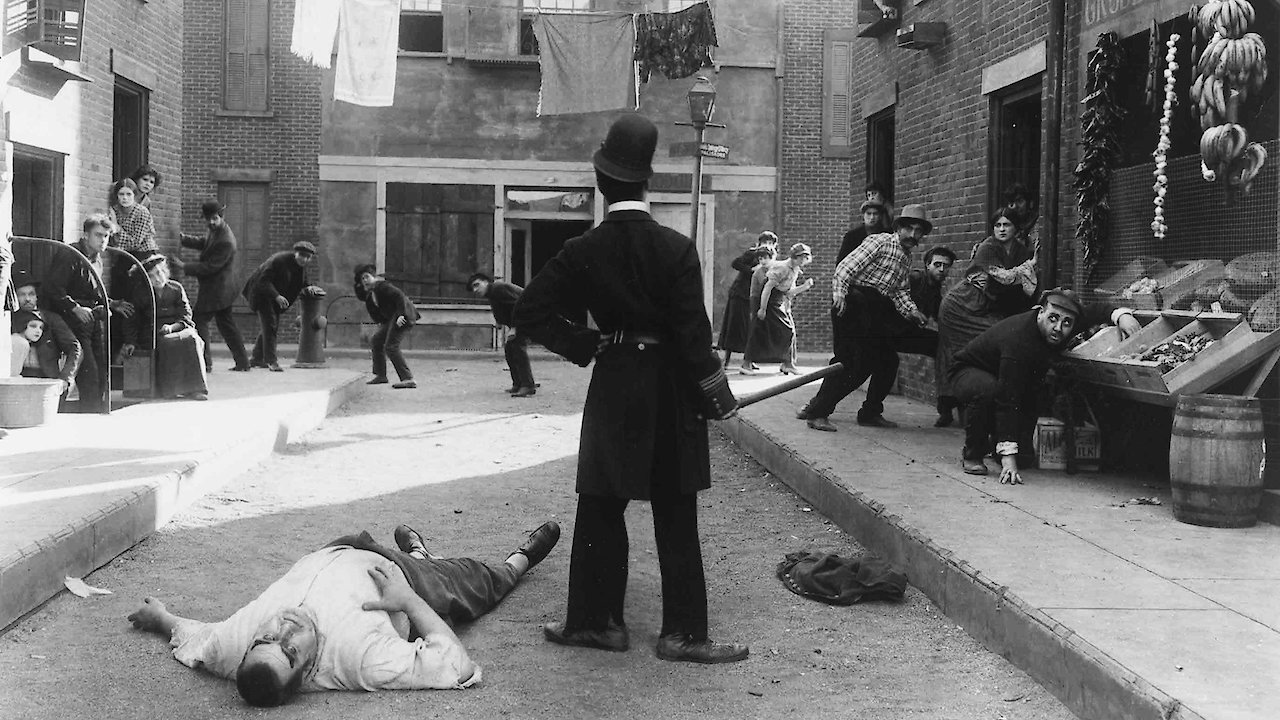Filter by Source
Seasons

12. The Adventurer
October 22, 1917
The most popular of the Mutuals, "The Adventurer" begins and ends with a chase. It is the fastest-paced film of the series, and although it has more slapstick, it is redeemed by its construction, characterization, and Chaplin's balletic grace. Highlights include Charlie donning a lampshade and freezing in position and a chase in which he dodges a prison guard and his rival for the girl.

11. The Immigrant
June 17, 1917
"The Immigrant," which contains elements of satire, irony, and romance as well as cinematic poetry, endures into the twenty-first century as a comic masterpiece. Chaplin's eleventh in the Mutual series is the best-constructed of his two-reelers and was Chaplin's favorite among all his two-reel comedies. In devising the film, Chaplin drew on his own experiences immigrating to the United States.

10. The Cure
April 16, 1917
"The Cure" is perhaps the funniest of the Mutuals. Inspiration for the film was drawn from the Los Angeles Athletic Club, where Chaplin was living at the time. There is a delightful scene where Charlie assumes several poses in his swimsuit as the curtains open and close. The scene was inspired by the tableaux vivant, a popular feature of many British music-hall programs.

9. Easy Street
February 5, 1917
Life on "Easy Street" is anything but. Poverty, starvation, drug addiction, and urban violence--subjects that foreshadow the social concerns in his later films--are interwoven in "an exquisite short comedy," wrote winning critic and writer Walter Kerr.

8. The Rink
December 14, 1916
One of Chaplin's most popular comedies. Charlie is an inept waiter who prepares the bill of Mr. Stout by examining the stains and other remnants on the sloppy eater's shirt front, tie, and ear. He shakes an unusual cocktail; his whole body does a shimmy while the cocktail shaker remains immobile in his hands. Chaplin's agility and grace make "The Rink" one of his most memorable early comedies.

7. Behind the Screen
November 13, 1916
Chaplin made "Behind the Screen" as a sort of parody of the knockabout, pie-throwing comedy of the Keystone films. As aspiring actress (Edna Purviance) desperate for work, disguises herself as a boy and is hired at the studio as a stagehand when the regular crew strikes. Charlie Chaplin discovers she is a girl.

6. The Pawnshop
October 2, 1916
In "The Pawnshop," Charlie is a pawnbroker's assistant in a pawnshop that evokes The London of Chaplin's childhood. The film is rich in comic transposition, a key element to Chaplin's genius. The apex of such work in the Mutuals is the celebrated scene in which Charlie examines an alarm clock brought in by a customer.

5. The Count
September 4, 1916
Chaplin impersonates a man of means in order to underscore the contrast between rich and poor-one of his favorite themes. Chaplin's largest production up to that time. For the film's dance sequence, he hired a small orchestra. The slippery dance floor facilitates some memorable eccentric dancing from Charlie, including splits and elevations done by hooking his cane on the chandelier above him.

4. One A.M.
August 7, 1916
"One A.M." Chaplin's fourth Mutual, is an impressive piece of virtuosity, a solo performance except for a brief appearance by Albert Austin as a taxi driver. A tour de force of Chaplin's superb pantomime and comic creativity performed in a restricted space, a brilliant experiment that he never repeated. The situation revolves around a drunken gentleman as he arrives home early one morning.

3. The Vagabond
July 10, 1916
Chaplin's third Mutual film, was an important step in Chaplin's career in which he interweaves pathos as an integral part of the comedy. His direction of the film shows sensitivity and restraint in his treatment of the melodramatic material, such as the dramatic device of the lost child finally identified by her unique birthmark. Chaplin's performance reveals great warmth and depth.

2. The Fireman
June 12, 1916
In "The Fireman," Chaplin portrays an inept firefighter at Fire Station 23. Charlie, still asleep, mistakes a drill bell for a fire alarm and single-handedly drives out the horse-drawn fire engine. When he discovers his error, he simply backs up the engine into the fire station, with horses galloping back (an early instance of camera tricks).

1. The Floorwalker
May 15, 1916
"The Floorwalker" contains a stronger plot than most of Chaplin's previous films, and the moving-staircase chase was novel for 1916. A glimpse of Chaplin's evolution to a more graceful type of screen comedy is evident in Charlie's dance when he discovers the valise of stolen money and dives into the bag. Audiences were amazed and delighted by Chaplin's brilliant antics.
Description
Where to Watch Chaplin's Mutual Comedies
Chaplin's Mutual Comedies is available for streaming on the website, both individual episodes and full seasons. You can also watch Chaplin's Mutual Comedies on demand at Amazon.
-
Premiere DateMay 15, 1916






















